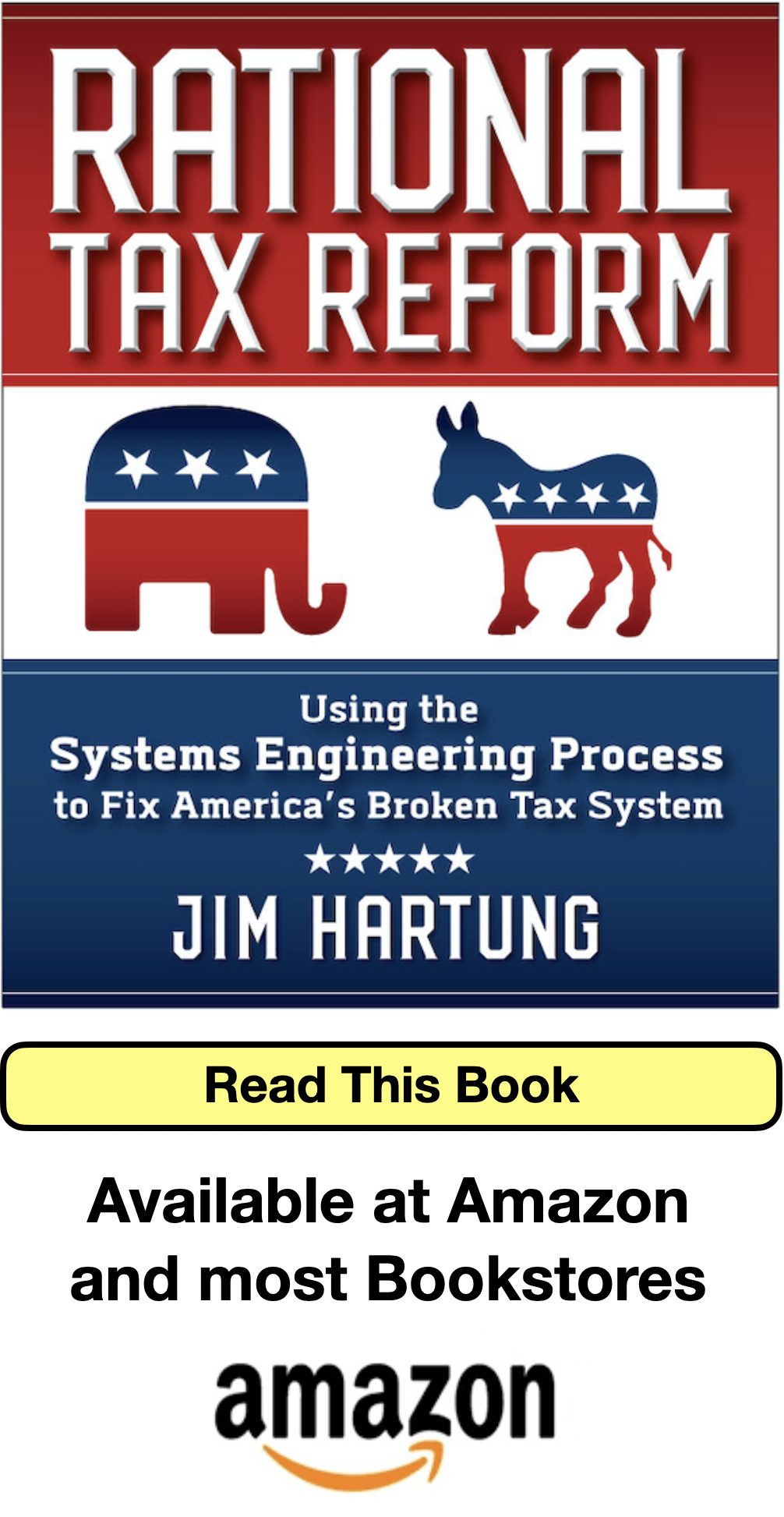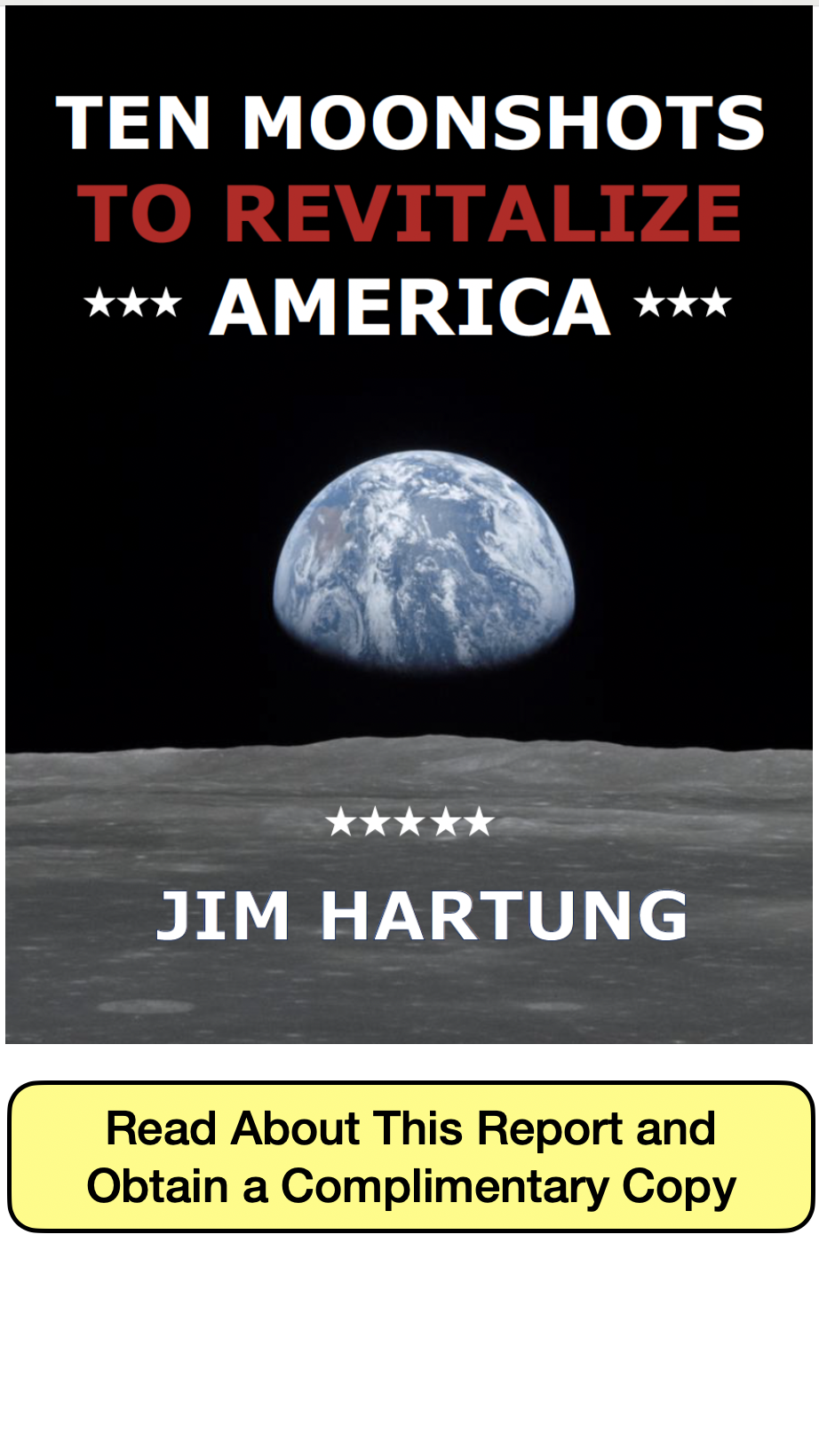Ten Moonshots to Revitalize America

This report describes how I used the six-step systems engineering (SE) process to develop a broad set of policies to address the most urgent problems in the United States. Contact me for a complimentary copy.
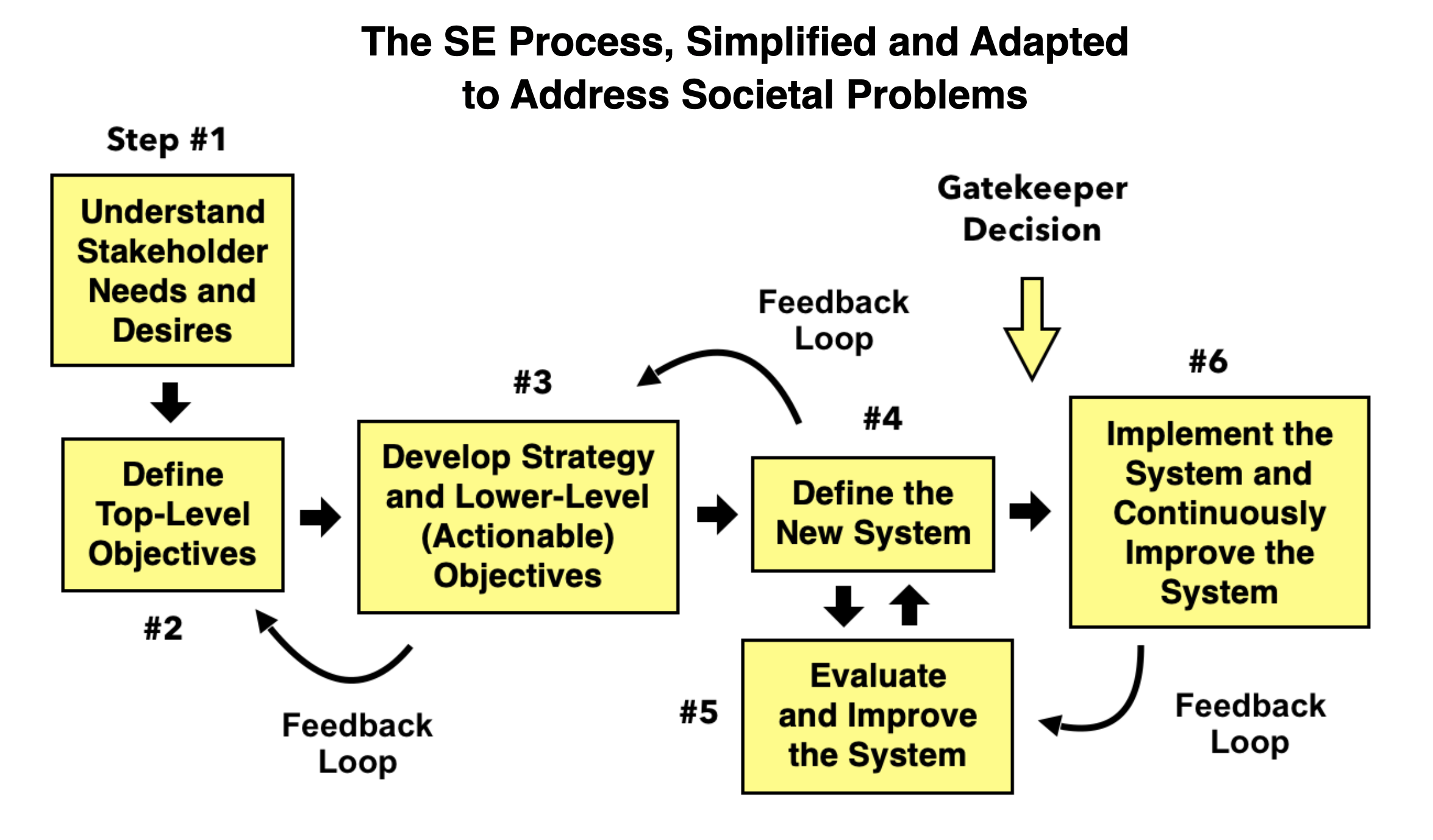
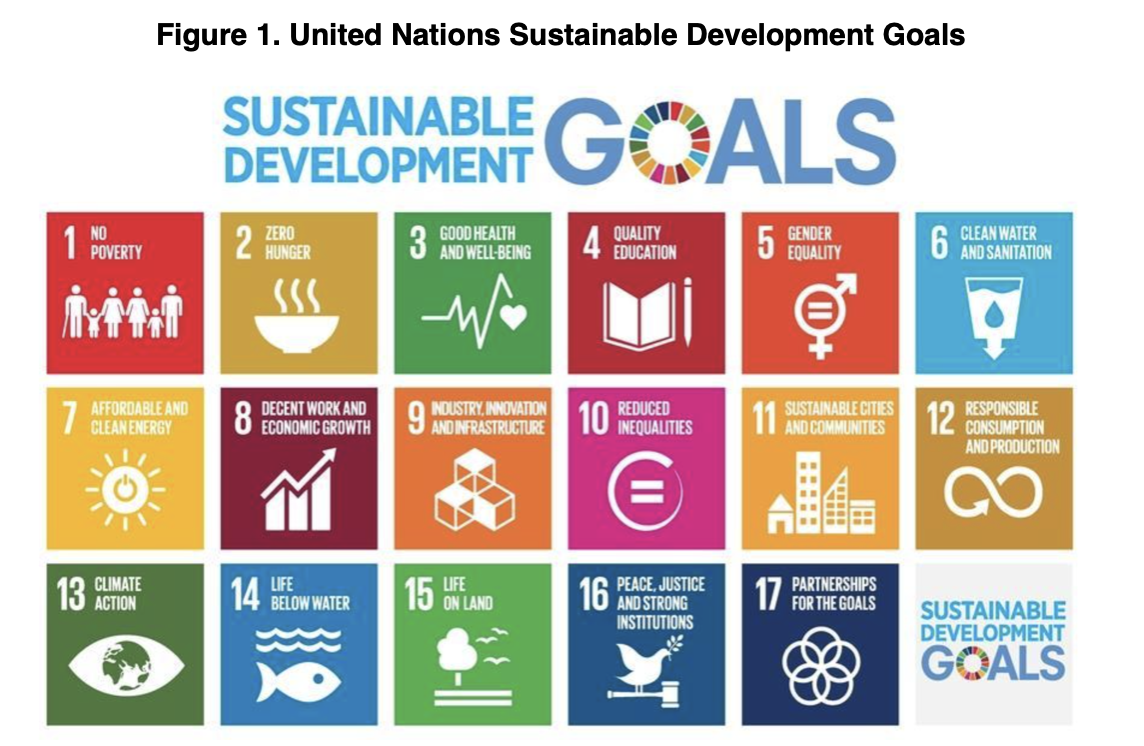 The starting point for this evaluation was the United Nations Sustainable Development Goals (SDGs). In 2015, the United Nations adopted 17 SDGs (shown in Figure 1) and 169 quantitative targets as objectives to guide global development through 2030. I used these SDGs and targets as the stakeholder needs and desires.
The starting point for this evaluation was the United Nations Sustainable Development Goals (SDGs). In 2015, the United Nations adopted 17 SDGs (shown in Figure 1) and 169 quantitative targets as objectives to guide global development through 2030. I used these SDGs and targets as the stakeholder needs and desires.
In 2020, Sachs et al. published a report (Sustainable Development Report 2020) that identifies the gaps each country must address to achieve the SDGs. The United States was ranked 31st globally, with an SDG score of 76.4 out of 100. My top-level objective is for the United States to achieve an SDG score of nearly 100 as soon as practical. To attain an SDG score of almost 100, the United States must address the following problem areas:1) inequality and discrimination, 2) healthcare and education, 3) jobs and economic opportunities, 4) environment, and 5) governance and global collaboration. Figure 2 shows these five problem areas in the left-hand column.
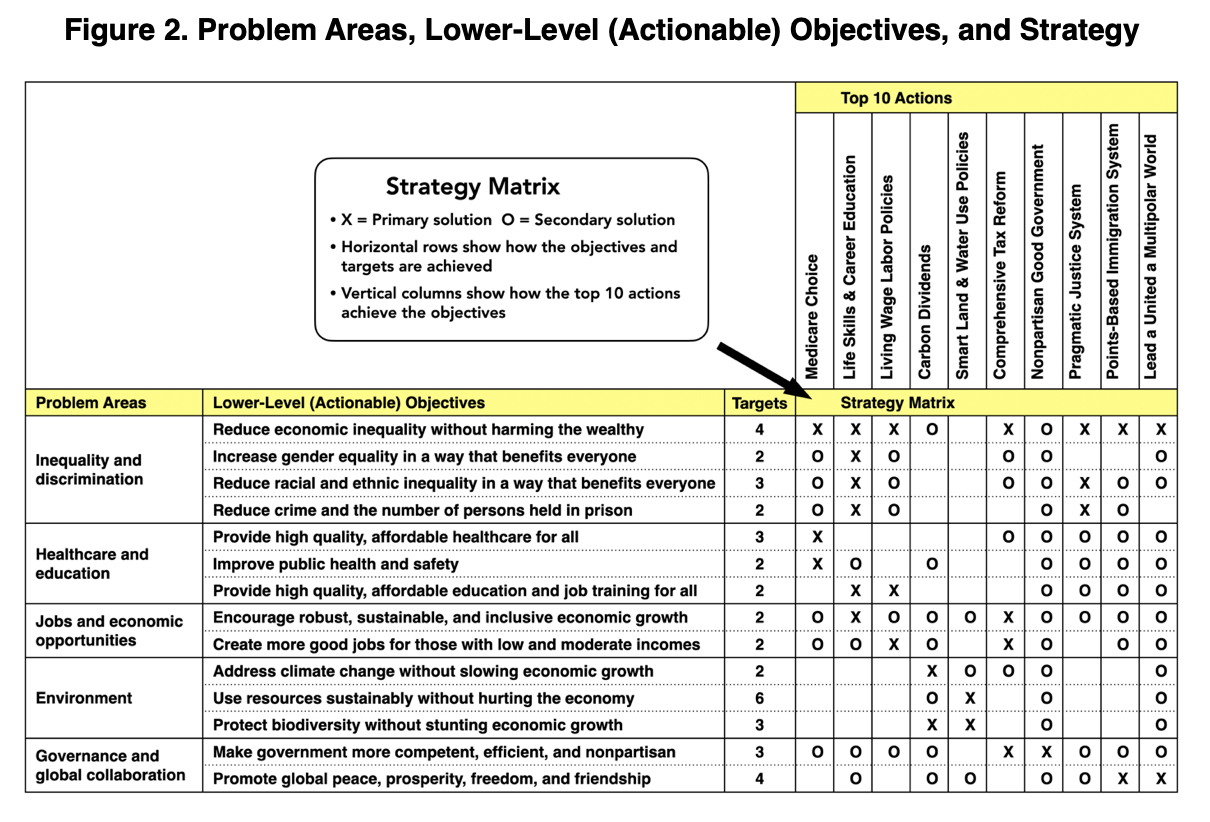
Figure 2 also shows 14 lower-level (actionable) objectives developed to address these problems (in the second column). For each lower-level (actionable) objective, two or more qualitative targets were established, as shown in the third column. A total of 40 quantitative targets were established (the sum of all numbers in the third column). Most of the quantitative targets came directly from the SDGs, but I added a few to address problems not adequately covered in the SDGs. Finally, ten actions were identified to achieve the 40 quantitative targets. The matrix below these ten actions shows how they accomplish the objectives. Each of these ten actions addresses several objectives, as shown in this “strategy” matrix. I refer to these ten actions as “Ten Moonshots to Revitalize America.”
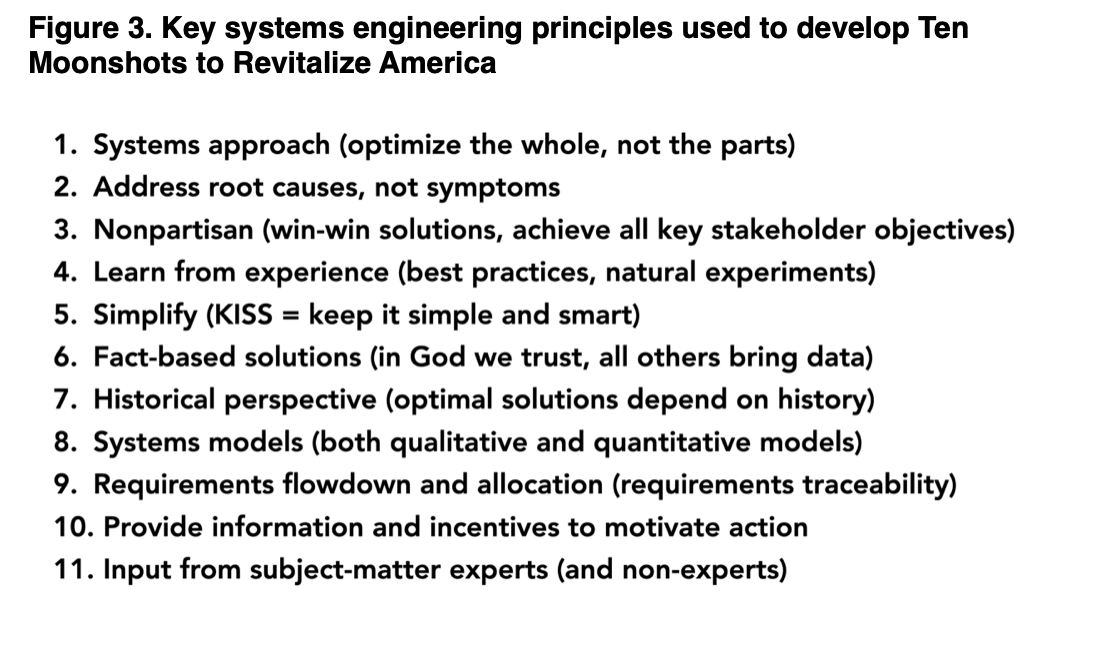
Developing the strategy and top ten actions in Figure 2 was complex and required several iterations. Fortunately, I discovered during this process that the same SE principles I learned while developing physical products and systems also apply when addressing intangible societal problems. Figure 3 summarizes 11 systems engineering principles that proved most helpful in developing the strategy and top ten actions in Figure 2.
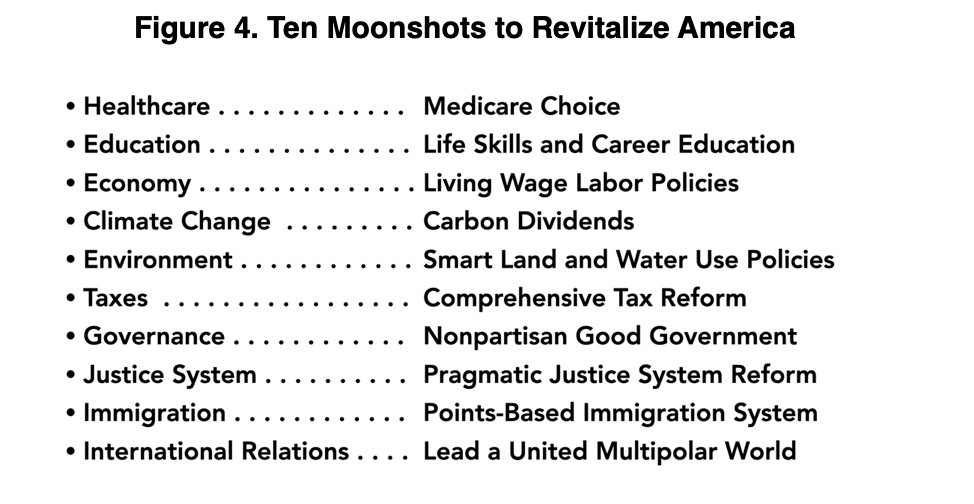
Figure 4 shows the top ten actions identified in Figure 2. While developing these actions, I aimed to create practical, nonpartisan solutions that can be implemented today and primarily completed in ten years. Following is a summary of these top ten actions:
1. Healthcare: Medicare Choice. I propose replacing the current wasteful and inefficient healthcare programs with a new approach to universal healthcare, which I call Medicare Choice. With this system, those who want Medicare will receive it. Those who don’t want Medicare can opt out and receive premium support instead. Medicare Choice combines an idea that many Democrats support (Medicare for All) with an idea that many Republicans favor (premium support). It will create competition between private insurance companies and Medicare. This will improve healthcare, reduce costs, and maximize personal choice. I propose to pay for Medicare Choice by broadening the corporate tax base by shifting most of the corporate tax burden away from corporate income taxes and towards value-added (consumption) taxes.
2. Education: Life Skills and Career Education. To improve the education system, I propose adding a new course of study to primary and secondary schools to teach students the generic skills they need to succeed in life and a career. These skills can be taught, and they are just as important as academic subjects, especially for disadvantaged students.
3. Economy: Living Wage Labor Policies: To give everyone a good opportunity to earn a living wage, I propose two actions: (1) expand work-study programs, career and technical education, and national service programs, especially for the young and the disadvantaged, and (2) increase the minimum wage to 50 percent of the median household income in each state or region (for high school graduates) and 40 percent of median household income (for those who have not graduated from high school).
4. Climate Change: Carbon Dividends. To address climate change, I propose revenue-neutral carbon dividends. With carbon dividends, oil, natural gas, and coal companies will pay a steadily increasing fee on their products, and all fees collected will be returned to the American people through quarterly dividend checks. This should reduce net US greenhouse gas emissions to near zero by 2050 while providing every taxpayer and dependent with carbon dividends ranging from about $500 to $1,500 annually.
5. Environment: Smart Land and Water Use Policies. To address environmental problems, I propose to (1) expand national and state parks and federal wilderness areas, (2) enact laws to require sustainable use of water resources (including aquifers), forests, and farmland, (3) discourage construction of houses and other high-value buildings in areas that are most susceptible to natural hazards such as flooding and fires, and (4) make infrastructure investments to build resiliency against human-caused and natural hazards.
6. Taxes: Comprehensive Tax Reform. I propose reforming the tax code by eliminating most tax expenditures, broadening the tax base, and reducing tax rates. Tax expenditures are tax exemptions, deductions, exclusions, credits, preferences, and deferrals that result in a loss of tax revenue. These tax expenditures are sometimes called tax loopholes. My proposed tax system provides sufficient tax revenue to balance the federal budget, restore Social Security to financial health, maintain the current defense spending and other government services, and pay for “Medicare Choice” and universal healthcare expenditures. By implementing fundamental tax reform, we can make the tax code simpler and fairer and stimulate sustainable economic growth.
7. Governance: Nonpartisan Good Government: To make government more effective and efficient, I propose several actions to (1) help Congress and the president overcome hyper-partisan politics and enact better laws, (2) create a more informed and engaged citizenry, (3) improve elections, (4) make the Supreme Court less partisan, and (5) encourage the media and opinion leaders to exercise free speech more responsibly.
9. Immigration: Points-Based Immigration System. To improve our immigration system, I proposed to reform it using Canada’s points-based system as a guide. My proposal increases merit-based immigration, decreases extended family immigration, expands temporary work permits to reduce the incentive for illegal immigration, and addresses complex problems such as how to deal with undocumented immigrants, asylum seekers, and refugees.
10. International Relations: Lead a United Multipolar World. To improve US foreign policy, I propose shifting from the current ad hoc decision-making process to a more rules-based approach and increasing international collaboration and assistance. My proposals are designed to encourage the development of a united multipolar world where global leadership is shared, cooperation and competition are based primarily on soft power rather than military power, a written code of conduct guides international relationships, and international agreements and institutions are aligned so every country has a strong incentive to comply with the code of conduct.
The last step in the systems engineering process is to implement and continuously improve the system. This step requires Congress and the president to act. My ten proposed actions contain about 50 specific recommendations, which are an integrated systems solution for many of America’s most urgent problems. We cannot implement so many reforms simultaneously. Nevertheless, it is good to have the end objective in mind when changing public policies. These actions and recommendations don’t need to be implemented together; they can be evaluated separately and enacted sequentially over a period of many years.
Please contact me for a complimentary copy of the "Ten Moonshots to Revitalize America" or if you would like to discuss my proposed solutions.
